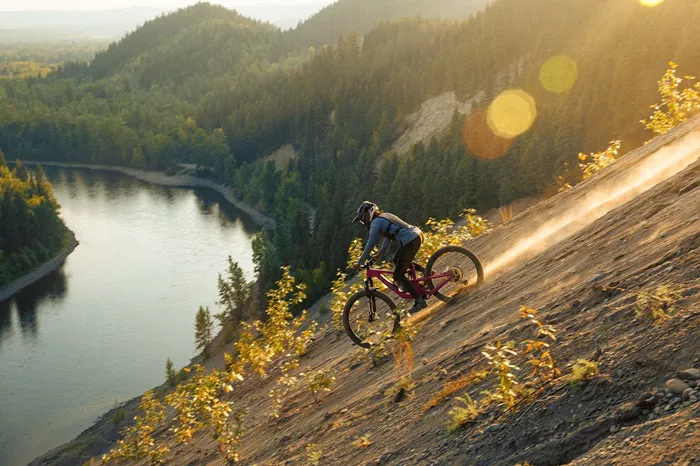Mountain biking is a thrilling and physically demanding sport that attracts enthusiasts from all walks of life. One of the most challenging aspects of mountain biking is climbing hills, which requires not only physical strength but also technical skill and mental fortitude.
Improving your uphill ability can significantly enhance your overall biking experience and performance. This article will explore various methods to improve the uphill capability of mountain bikes, focusing on fitness, technique, and equipment adjustments.
Understanding The Challenges of Uphill Climbing
Climbing hills on a mountain bike presents unique challenges due to factors such as gradient, terrain type, and rider fitness. Uphill climbs can be steep and prolonged, requiring sustained power output and efficient energy use. Riders often struggle with maintaining momentum, managing fatigue, and navigating technical obstacles. To conquer these challenges, it is essential to adopt a multifaceted approach that includes physical training, skill development, and strategic gear choices.
Methods to Improve Uphill Ability
1. Enhance Aerobic Fitness
Aerobic endurance is crucial for climbing efficiently. To improve your aerobic capacity:
Steady-State Rides: Engage in long rides at a comfortable pace to build endurance. Aim for 60-90 minutes in a low to moderate heart rate zone (Zone 2) to enhance your cardiovascular system.
Interval Training: Incorporate high-intensity interval training (HIIT) sessions that include short bursts of intense effort followed by recovery periods. This can include hill sprints or flat sprints on your bike.
2. Strength Training
Building leg strength is vital for effective climbing:
Gym Workouts: Focus on compound movements such as squats, lunges, and deadlifts to strengthen your quads, hamstrings, glutes, and core. These exercises will improve your power output when pedaling uphill.
Bodyweight Exercises: Incorporate exercises like step-ups and box jumps into your routine to develop explosive strength.
3. Optimize Riding Technique
Proper technique can make a significant difference in climbing efficiency:
Body Positioning: Shift your body weight forward when climbing to keep the front wheel grounded while maintaining traction on the rear wheel. This technique helps in navigating steep sections more effectively.
Cadence Management: Practice varying your cadence during climbs.
High-cadence efforts (spinning faster) are more energy-efficient on gradual slopes, while lower cadences (grinding harder) may be necessary for steeper inclines.
4. Gear Selection
Choosing the right gear setup can greatly affect your climbing performance:
Adjust Gear Ratios: Consider using a smaller chainring or different cassette ratios to make pedaling easier on steep climbs. A lower gear allows for higher cadence at lower power outputs.
Lighten Your Load: Reducing bike weight by using lighter components (wheels, frame materials) can improve your power-to-weight ratio, which is critical for climbing.
5. Hill Repeats
Hill repeats are an effective way to build both strength and stamina:
Structured Workouts: Find a hill that takes 60-90 seconds to climb at a high intensity (around 90% effort). Climb up and recover on the descent; repeat this several times. This method trains both aerobic capacity and mental toughness.
6. Nutrition and Hydration
Proper fueling before and during rides is essential for maintaining energy levels:
Pre-Ride Nutrition: Consume easily digestible carbohydrates before rides to ensure you have sufficient energy reserves.
Hydration Strategy: Stay hydrated throughout your ride; dehydration can significantly impair performance.
7. Mental Preparation
Climbing can be as much a mental challenge as it is physical:
Visualization Techniques: Mentally rehearse climbs before attempting them to build confidence and reduce anxiety.
Positive Mindset: Cultivate a positive attitude towards climbing; focus on the enjoyment of the ride rather than the struggle.
8. Practice Technical Skills
Technical skills are vital for navigating challenging climbs:
Obstacle Navigation: Practice hopping over rocks or roots while maintaining momentum. This skill will help you tackle technical sections without losing speed.
Balance Drills: Work on balance exercises off the bike (e.g., yoga or balance boards) to improve stability while riding uphill.
Conclusion
Improving uphill ability on a mountain bike requires a comprehensive approach that combines physical training, technical skill development, proper nutrition, and mental resilience. By focusing on these areas, riders can enhance their climbing performance significantly, leading to more enjoyable rides and greater overall fitness. Whether you’re tackling steep trails or preparing for competitive events, implementing these strategies will help you conquer those hills with confidence and efficiency.
Related topics:
- Why Do They Blow Whistles in Mountain Biking?
- Why Is Mountain Biking Good for You?
- Why Do My Hands Go Numb While Mountain Biking?

